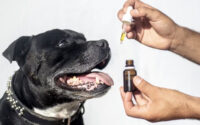Dogs and whiskers
Whiskers, those seemingly simple strands of hair protruding from the muzzles, cheeks, and above the eyes of dogs, hold a wealth of mystery and function. Far from being mere facial adornments, these tactile hairs, scientifically known as vibrissae, play a pivotal role in canine perception and communication. In this exploration of the enigmatic world of dog whiskers, we delve into the sensory capabilities they bestow upon our four-legged companions, how they aid in navigation, their significance in doggy dialogue, and the proper care these important features deserve. Additionally, we compare whisker characteristics across different breeds, offering a glimpse into the fascinating diversity of man’s best friend.
Unraveling the Mystery of Dog Whiskers
Table of Contents

Dog whiskers are more than just hair; they are a sophisticated sensory tool. Each whisker emerges from a follicle richly innervated and surrounded by a network of muscles, allowing for fine-tuned movement. These follicles are embedded deep within the skin and connected to the nervous system, making whiskers incredibly sensitive to touch and even changes in airflow. The roots of whiskers are surrounded by a blood-filled sinus, adding to their sensitivity. Unlike human hair, whiskers do not cover the entire body but are strategically located to provide maximum sensory input. The growth cycle of whiskers is similar to other hairs, but they are typically thicker and stiffer due to their specialized role.
The Sensory Powerhouse: Canine Whiskers

The whiskers’ primary function is to transmit detailed information about the immediate environment directly to the dog’s sensory-rich brain. Dogs can detect objects nearby and assess their texture and shape, thanks to their whiskers. These tactile hairs are so sensitive that they can pick up subtle changes in air currents, enabling dogs to sense approaching dangers or prey. Whiskers also play a crucial role in spatial awareness, helping dogs understand their surroundings even in the dark. The vibrissae can trigger a protective blink reflex if objects come too close to the eyes, safeguarding them from harm. In addition, whiskers can detect vibrations in the ground, aiding in the perception of movement around them.
How Dogs Use Whiskers to Navigate the World

Whiskers are indispensable navigational tools for dogs, especially in low-light conditions or tight spaces. When a dog enters a dark room, its whiskers act as environmental scanners, brushing against surfaces and relaying spatial data back to the brain. In the wild, this ability helps dogs move through thick underbrush without injury. Indoor pets use whiskers to avoid bumping into furniture or other household obstacles. Whiskers are also employed in hunting and tracking, brushing against the terrain and assisting in locating prey or following a trail. In aquatic scenarios, whiskers can sense water currents, aiding dogs in calculating the best path when swimming.
The Role of Whiskers in Dog Communication

Though less obvious than barking or tail wagging, whiskers contribute subtly to canine communication. The positioning of whiskers can indicate a dog’s mood: relaxed whiskers suggest contentment, while forward-pointing whiskers can signal alertness or aggression. In close encounters, dogs often use their whiskers to gather information about another dog or human, which can influence their social responses. Whiskers may also help mother dogs navigate around their newborn puppies, preventing accidental harm. Even the slightest contact with another animal or object can prompt a communicative response, making whiskers a crucial, if understated, element in the complex language of dogs.
Caring for Your Dog’s Whiskers: Do’s and Don’ts

Proper care of your dog’s whiskers is vital for their well-being. Here are some guidelines:
- Do not trim or cut whiskers: Trimming can disorient your dog and deprive it of a vital sensory tool.
- Be gentle during grooming: Avoid rough handling of the whiskers as they are highly sensitive.
- Inspect regularly: Check for damage or infection around the whisker follicles.
- Avoid restrictive gear: Ensure collars or muzzles do not press uncomfortably against the whiskers.
- Keep an eye on playtime: Monitor interactions with other pets to prevent whisker damage.
- Consult your vet: If whiskers appear damaged or there are changes in your dog’s navigation, seek professional advice.
Whiskers and Breed Variations: A Comparison
| Breed | Whisker Characteristics |
|---|---|
| Greyhound | Sparse, fine whiskers suited to their aerodynamic build. |
| German Shepherd | Thick, long whiskers aiding in their work as police dogs. |
| Boxer | Short, sturdy whiskers reflecting their strong jawline. |
| Labrador Retriever | Dense, water-resistant whiskers beneficial for swimming. |
| Saint Bernard | Abundant, robust whiskers helping in rescue scenarios. |
| Chihuahua | Delicate, thin whiskers matching their petite size. |

While all dogs have whiskers, there are notable breed-specific variations that reflect their evolutionary roles and environments. Greyhounds, bred for speed, have whiskers that offer minimal wind resistance. Conversely, breeds like the Saint Bernard possess whiskers that can aid in sensing victims in rescue missions. Similarly, water-loving breeds such as the Labrador Retriever have whiskers that are adapted to aquatic tasks, helping them navigate through water with ease.
The whiskers of a dog are a testament to the evolutionary refinement of canine senses, each strand a thread in the tapestry of their survival and social toolkit. Whether aiding in navigation, communication, or environmental awareness, these tactile hairs are an indispensable part of a dog’s sensory arsenal. Understanding and respecting the purpose and care of dog whiskers can enhance the bond between humans and their cherished canine companions, ensuring these loyal pets navigate their world with confidence and ease. As we continue to learn and marvel at the intricacies of our furry friends, the humble whisker stands as a reminder of the complexity and adaptation inherent in the natural world.


